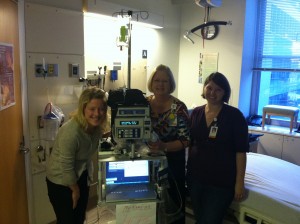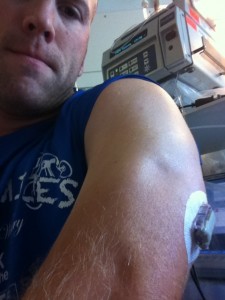Joel Connable, news anchor at the ABC TV station in Seattle, was found dead in his apartment a couple of days ago, having died from what was described as a “diabetic siezure”.
http://www.miamiherald.com/2012/11/08/3087599/newlywed-tv-anchor-joel-connable.html
Some of my friends in the T1D community have unfortunately experienced this. Joel was 39 years old, and was married two weeks prior to his death.
This is THE fear I experience every day, all day. Most people are afraid of how their kids will turn out, what their boss is going to say at this week’s meeting, and whether or not they’re going to have enough money to retire before they’re dead. Yes, I worry about that stuff too, but my real fear is that I will face premature death due to hypoglycemia, hypoglycemia induced seizures, or from a cardiac event brought on by too many teenage years of hyperglycemic events.
Actually, the truth is, most of the time I ignore the fact that I am vulnerable to this very situation, compartmentalizing the risk so that I may be the aggressive (wanna be) athlete, ambitious employee, busy husband and father.
Should I live scared?
Should I live with reckless abandon?
Neither. I believe both options will breed failure for those living with T1D. While fear is a great motivator and reckless abandon is just that, a middle ground needs to be established. Constant self analysis, development of the day and constant tweaking of care. Blood glucose levels tested, basal rates adjusted, bolus ratios revised……the only thing constant about these is the change. I know, that’s the difficult part, the hourly consistent focus.
And the T1D community cannot take news like this and become frustrated. I admit, this news hit me a little hard today. A 39 year old healthy male with T1D with everything going for him, lost everything. I am 36, married with 2 children. I want to be around to spoil my grandchildren.
HOWEVER, I CAN’T let this news define my outcome. The T1D community can’t let this news defeat them.
We, the T1D community has to continue fighting. Fighting for themselves and for the rest of us in the T1D community. The self fight is the focus in blood glucose control and staying physically fit.
The T1D community fight is about helping each other improve the lives of those of us with the disease now, and helping to improve the lives of any of our children who end up being diagnosed.
Many changes are coming for the T1D community because of volunteers who raise money for research.
- Cure research focusing on immune, regeneration and replacement of the beta cells that produce and secrete insulin (http://www.jdrf.org/index.cfm?page_id=101980).
- Treatment research focused on the artificial pancreas and glucose control (http://www.jdrf.org/index.cfm?page_id=106381).
- Prevention research focused on limiting or eliminating the factors that may cause T1D (http://www.jdrf.org/index.cfm?page_id=101909).
We, the T1D community, cannot just throw our hands up and take what complications come to us. We need to fight with the tools we have now, and fight for better tools in the future.
So, in the month of November, Diabetes Awareness Month:
- Be Aware of the risks, because they are real, and
- Be Aware of the changes coming in the future, and the part we all need to play in order to obtain better care. We can sit back and wait for something terrible to happen to us, or we can fight for something better.
Wouldn’t it be nice if I could tell my granchildren the story about how I used to have Type 1 Diabetes?


